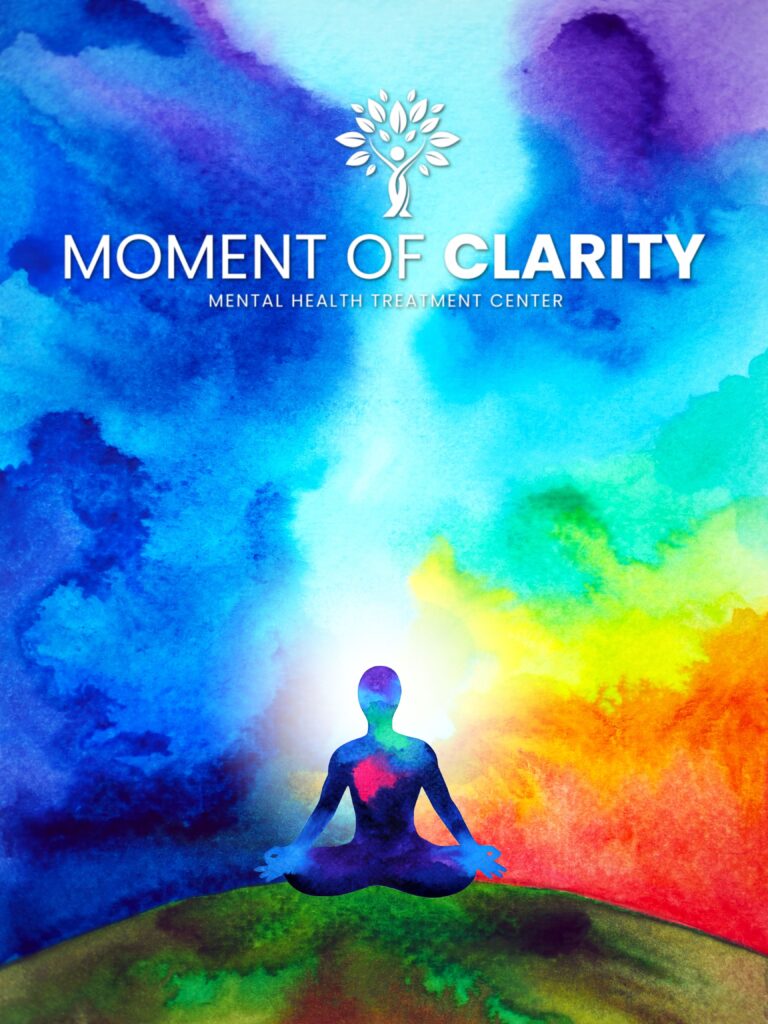It is possible to experience a combination of anxiety and depression, often referred to as comorbid anxiety and depression or mixed anxiety and depressive disorder (MADD). Many individuals with these co-occurring disorders report feeling trapped in a cycle where the symptoms of one condition exacerbate the other, creating a unique and challenging experience. While anxiety often manifests as excessive worry, restlessness, and fear, depression is usually characterized by feelings of sadness, hopelessness, and lack of motivation. When both conditions are present, individuals may feel overwhelmed by persistent worry and a sense of emptiness, making it harder to cope with daily life.
Fortunately, individuals struggling with anxiety and depression can find hope through effective mental health treatment support. Moment of Clarity’s mental health facilities in Southern California offer comprehensive care that addresses the complexities of mixed conditions. Through therapy, medication management, and support, Moment of Clarity helps individuals regain stability and work through the underlying causes of both anxiety and depression.

What Is Mixed Anxiety and Depressive Disorder?
Mixed Anxiety and Depressive Disorder is a mental health condition characterized by symptoms of anxiety and depression occurring simultaneously. Unlike generalized anxiety disorder (GAD) or major depressive disorder (MDD), MADD doesn’t meet the criteria for either condition alone but involves a combination of symptoms from both. Individuals with MADD may experience persistent worry, restlessness, and tension typical of anxiety, alongside feelings of sadness and low energy associated with depression.
The overlap of these symptoms can create a unique challenge, as the person may feel overwhelmed by the constant nervousness of anxiety and the emotional heaviness of depression. Symptoms can include difficulty concentrating, sleep disturbances, irritability, and feeling mentally and physically drained. This mix can make it harder to pinpoint which disorder is most dominant, complicating diagnosis and treatment.
Treatment for MADD can involve a combination of psychotherapy, medication, and lifestyle changes to manage stress and improve emotional well-being. Addressing both conditions at once can help individuals regain balance, as these disorders often reinforce each other, creating a cycle of distress that is challenging to break without targeted, integrated care.
Mental Health Treatment That Works
Can You Get PHP for Mixed Anxiety and Depressive Disorder?
It is possible to receive Partial Hospitalization Program (PHP) treatment for MADD, especially if the symptoms are severe and impact your ability to function in daily life. PHP is an intensive, structured outpatient treatment program that provides a high level of care without requiring full-time hospitalization. It is designed for patients who need more mental health support than traditional outpatient therapy but do not require 24-hour inpatient care.
For those with MADD, PHP can be highly beneficial. It offers a combination of individual therapy, group therapy, psychoeducation, and sometimes medication management in a supportive, therapeutic environment. PHP aims to help individuals manage their symptoms, learn coping strategies, and improve their overall functioning while still allowing them to return home in the evenings.
Typically, PHP is appropriate for individuals who:
- Experience significant distress or impairment because of anxiety and depressive symptoms.
- Have not responded well to traditional outpatient therapy.
- Are at risk of hospitalization due to the severity of their symptoms but don’t require 24-hour care.
If you are struggling with MADD, contact a treatment facility like Moment of Clarity to discuss your symptoms and determine if PHP is appropriate for your situation.

What Is the VA Rating for Mixed Anxiety and Depressed Mood?
The U.S. Department of Veterans Affairs (VA) rating for MADD is determined based on the severity of the symptoms and how they impact a veteran’s ability to function in daily life and maintain employment. Mental health conditions, including mixed anxiety and depressed mood, are evaluated under the VA’s General Rating Formula for Mental Conditions.
The rating scale for mental health conditions generally falls into these categories:
- 0% – Mild symptoms that do not interfere significantly with work or social functioning.
- 10% – Mild symptoms such as occasional anxiety, sleep disturbances, or mild depression that cause slight functional impairment.
- 30% – Moderate symptoms, including occasional panic attacks, difficulty concentrating, or mood swings that moderately interfere with work and social life.
- 50% – Symptoms that cause significant impairment, such as frequent panic attacks, memory problems, or difficulty establishing and maintaining relationships.
- 70% – Severe symptoms, such as near-continuous panic or depression, severe memory impairment, or the inability to maintain relationships or employment.
- 100% – Total occupational and social impairment due to severe symptoms, such as hallucinations, delusions, or an inability to function in most areas of life.
The VA evaluates the frequency, duration, and severity of symptoms to determine the appropriate rating, ranging from 0% to 100%. Veterans with mixed anxiety and depressed mood often receive ratings between 10% and 50%, depending on their specific symptoms and functional limitations.
Is MADD Serious?
Mixed Anxiety and Depressive Disorder involves a combination of anxiety and depression symptoms that can significantly affect a person’s emotional, mental, and physical well-being. The impact of MADD varies from person to person, but for many, it leads to persistent distress that disrupts daily life, work, relationships, and overall functioning.
The anxiety component of MADD may cause constant worry, restlessness, and fear, while the depressive aspect can lead to feelings of sadness, hopelessness, and a lack of energy or motivation. These overlapping symptoms can create a cycle where anxiety exacerbates depression, and depression increases anxiety, making it difficult for individuals to manage their emotions and cope with daily challenges.
MADD can interfere with basic activities like personal care, social interactions, and employment, leading to isolation and diminished quality of life. Additionally, individuals with MADD are at higher risk for developing other mental health issues, such as substance abuse or physical health problems, because of chronic stress.
Effective treatment, which generally involves a combination of therapy, medication, and lifestyle changes, is essential to manage MADD and prevent further complications. Without treating depression as a neurological disorder, MADD can lead to long-term suffering and reduced ability to function in everyday life.
Contact Moment of Clarity for Mixed Anxiety and Depressive Disorder Treatment Options
If you or someone you know is struggling with mixed anxiety and depressive disorder, reaching out to Moment of Clarity’s mental health treatment centers can be a vital step toward recovery. Our team offers personalized treatment plans tailored to address the complex symptoms of MADD. With a combination of evidence-based therapies, including cognitive-behavioral therapy (CBT), medication management, and supportive counseling, Moment of Clarity provides a comprehensive approach to mental health care. By addressing both anxiety and depression simultaneously, we help patients break the cycle of distress and work toward improved emotional stability and overall well-being.
Moment of Clarity is committed to offering compassionate, individualized care in a safe and supportive environment. We ensure that each client receives the tools and support needed to manage their symptoms and regain control of their life. If you’re ready to take the next step in your mental health journey, contact us at 949-625-0564 to learn more about our treatment options and how we can help you achieve lasting healing and balance.
External Sources
- National Alliance of Mental Illness – The Comorbidity of Anxiety and Depression
- CCK – VA Disability Rating for Depression and Anxiety
- ScienceDirect – Mixed anxiety–depressive disorder and major depressive disorder




